Introduction
Welcome to the world of green gardening, where nature lovers unite in a shared mission to preserve our environment one garden at a time. This guide aims to enlighten and inspire you to adopt environmentally friendly gardening practices, transforming your garden into a thriving, sustainable oasis.
The Growing Interest in Green Gardening
As the world grapples with the impact of climate change and resource depletion, more people than ever before are exploring ways to reduce their ecological footprint. Gardening, an activity many enjoy, has yet to escape this environmental scrutiny. Green gardening, also known as sustainable or eco-friendly gardening, has emerged as a response. This practice aims to maintain and enhance the health of our planet, starting right in our backyards.
Green gardening takes various forms, including organic gardening, water-wise gardening, and wildlife gardening, among others. But it’s not just about saving the planet; green gardening also creates more healthy and vibrant gardens. It’s no wonder more gardeners are interested in embracing environmentally friendly practices.
Understanding Environmentally-Friendly Gardening
But what exactly is green gardening? Simply put, green gardening is about working with nature, not against it. It involves using resources efficiently, reducing waste, and creating a healthy, diverse ecosystem that attracts and sustains local wildlife.
Environmental gardening principles often include:
- Plant selection: Choosing native, drought-tolerant, and disease-resistant plants.
- Organic practices: Avoiding chemical pesticides and fertilizers and employing natural pest control methods.
- Water conservation: Using water-wise gardening techniques, such as efficient irrigation systems and rainwater harvesting.
- Composting: Turning garden and kitchen waste into nutrient-rich compost.
- Encouraging biodiversity: Creating habitats for local wildlife and maintaining diverse plants.
The Impact of Your Garden Choices
Every decision you make in your garden, from the plants you choose to the products you use, has an environmental impact. Some practices may deplete resources, pollute water bodies, or harm beneficial insects and other wildlife. In contrast, green gardening practices help preserve natural resources, support local biodiversity, and can even help mitigate climate change.
For example, using compost made from garden and kitchen waste reduces the amount of waste that ends up in landfills and improves your garden soil’s health and fertility. Likewise, choosing native plants can provide essential habitats and food for local wildlife while requiring less water and care than exotic species.
In the following sections, we’ll delve deeper into these green gardening practices and offer tips for creating your environmentally-friendly garden. Whether you’re a seasoned gardener or just starting, there’s always room to make your garden a little greener.
Choosing the Right Plants
Picking the right plants is a significant first step in creating an environmentally-friendly garden. Not all plants are created equal - some are more suitable for sustainable gardening than others. Your plant choices can dramatically influence your garden’s water usage, soil health, and local biodiversity. Let’s explore the benefits of native, drought-resistant, and perennial plants in more detail.
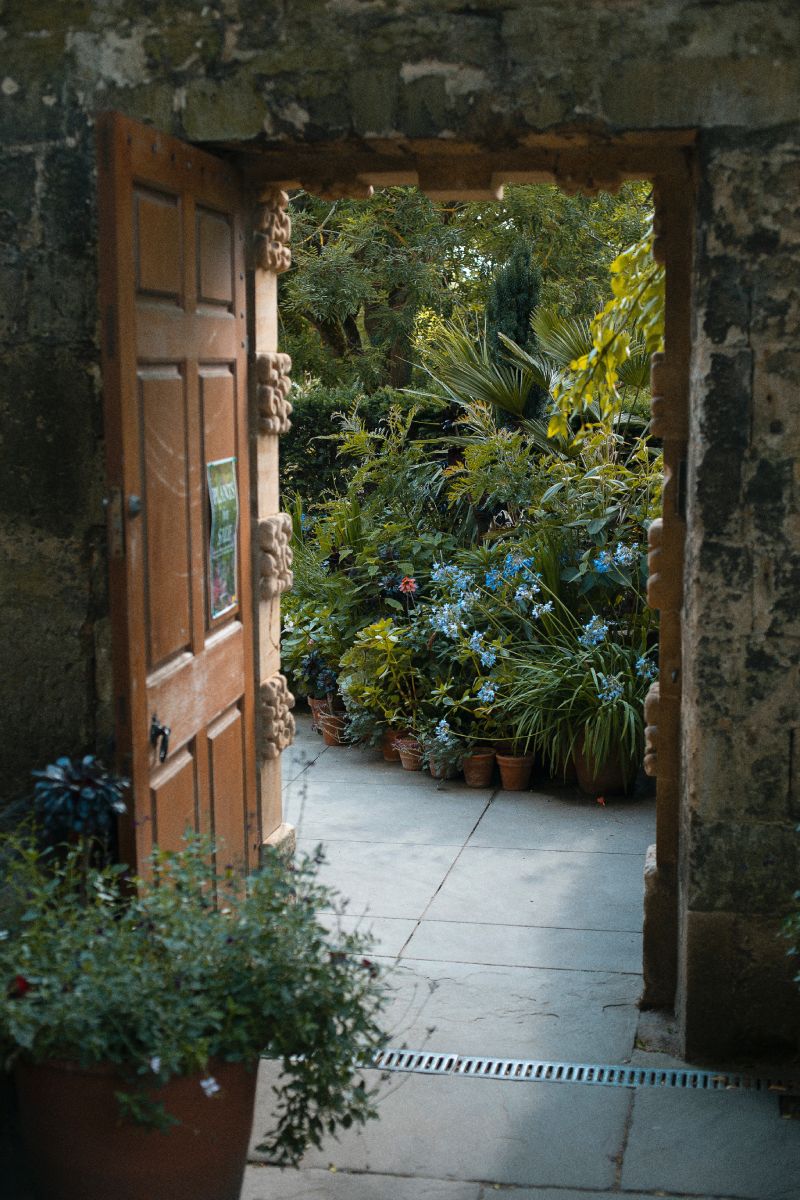
The Advantage of Native Plants
Native plants have evolved over thousands of years to thrive in your local climate and soil conditions, making them exceptionally hardy and easier to grow than non-native species. They have developed symbiotic relationships with local wildlife, often serving as food sources or providing habitats.
Here are a few benefits of incorporating native plants into your garden:
- Adaptability: Native plants are well-adapted to local soil, rainfall, and temperature conditions.
- Less maintenance: They typically require less watering, fertilizing, and overall care than exotic species.
- Support local biodiversity: Native plants often serve as food and habitat for wildlife, including birds, bees, butterflies, and other beneficial insects.
Try contacting your local garden center or extension service for a list of native plants suitable for your area.
Importance of Drought-Resistant Varieties
Water is a precious resource, and its conservation should be a top priority in your green garden. Choosing drought-resistant plants, drought-tolerant or xerophytic plants can significantly reduce your garden’s water needs.
Drought-resistant plants have adaptations like deep roots, waxy or hairy leaves, or succulent tissues that enable them to survive in dry conditions. These plants not only save water but can also withstand periods of weather fluctuations, contributing to a more resilient garden.
Considering Perennial Plants
Perennials live for over two years, regrowing each spring from their rootstock rather than seeding. Incorporating perennial plants into your garden can contribute to its sustainability in several ways:
- Soil health: Perennials have deep root systems that help to stabilize the soil, prevent erosion, and improve soil structure.
- Less work: Perennials save time and effort as they don’t need to be replanted each year.
- Biodiversity: Different perennials bloom at different times, providing a continuous food supply for pollinators.
Remember, creating a sustainable garden isn’t about implementing everything at once but about making more conscious choices step by step. Starting with your plant selection is a solid first step in your green gardening journey.
Organic Gardening Practices
Organic gardening emphasizes cultivating your garden so that it sustains and nourishes itself. This gardening method cooperates with nature to build soil health and foster pest and disease resistance, eliminating the need for synthetic pesticides and fertilizers. Let’s discuss the increasing shift towards organic gardening and how to start and maintain your organic garden.
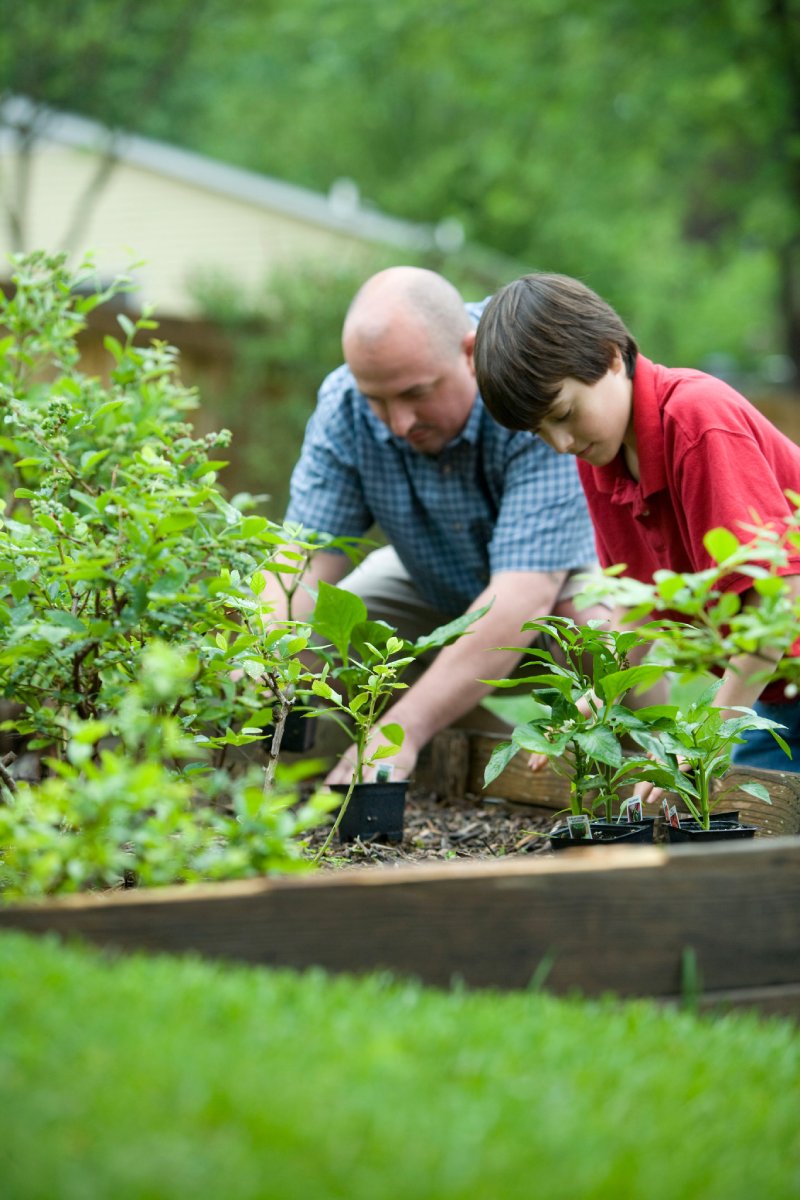
The Shift Towards Organic Gardening
Interest in organic gardening has steadily grown as more people recognize its environmental and health benefits. Organic gardening is a responsible and earth-friendly choice, offering numerous advantages:
- Healthy soil: Organic gardening practices enrich soil fertility, promoting the growth of healthier, more robust plants.
- Eco-friendly: It avoids synthetic chemicals, reducing your garden’s environmental impact.
- Health benefits: Organic gardens produce healthier food. Fruits, vegetables, and herbs grown organically are free from potentially harmful pesticides and fertilizers.
With these benefits, it’s unsurprising that many gardeners embrace organic gardening.
Starting Your Organic Garden
Starting an organic garden might seem daunting, but it’s about returning to basics. Here are some essential steps to follow:
- Choose the right location: Most vegetables and flowers require daily 6-8 hours of sunlight. Make sure your garden has adequate sun exposure and good soil.
- Use organic soil: Healthy soil is teeming with life, not just dirt. Use compost, leaf mold, or well-rotted manure to enrich your soil with organic matter.
- Select suitable plants: Choose plants known to thrive in your local soil and climate conditions.
Starting an organic garden requires planning, but the rewards of fresh, pesticide-free vegetables, fruits, and flowers make the effort worth it.
Maintaining an Organic Garden
The key to maintaining an organic garden is to mimic natural ecosystems. Here are some organic practices that help keep a healthy garden:
- Composting: It’s a great way to recycle kitchen and garden waste, providing nutrient-rich food for your plants.
- Natural pest control: Encourage beneficial insects and animals, such as ladybugs, spiders, and birds, which can help control pest populations.
- Crop rotation: This helps prevent the depletion of nutrients and disrupts pest and disease cycles.
Transitioning to organic gardening practices may require a mindset shift and some patience. Still, the health and environmental benefits make it a worthwhile pursuit. Remember, every organic garden contributes to a healthier and more sustainable planet.
Water Conservation in the Garden
Water is a precious resource, and water conservation in the garden is a significant part of environmentally friendly gardening. By adopting smart watering techniques, harvesting rainwater, and considering xeriscaping, gardeners can maintain lush, productive gardens while minimizing water usage. Let’s delve into how these methods can help create a water-efficient garden.
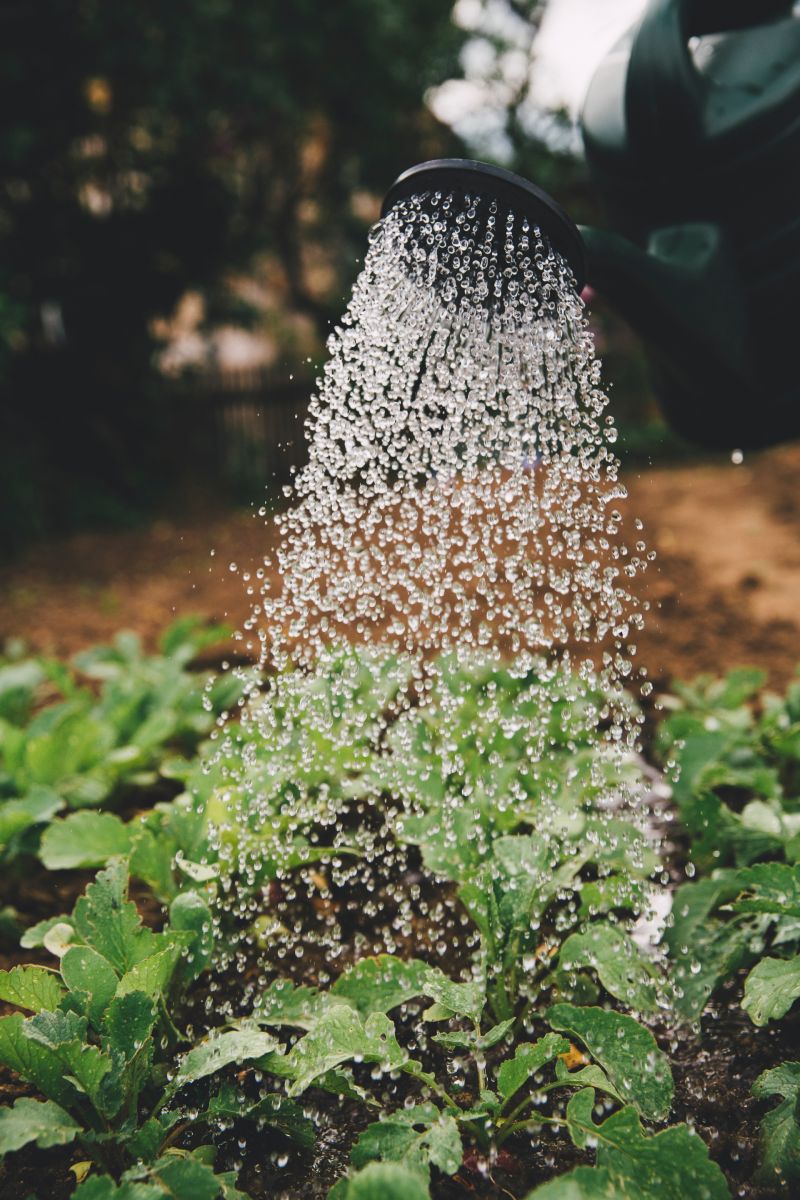
Efficient Watering Techniques
Adopting efficient watering techniques is the first step towards conserving water in your garden. Here are a few strategies:
- Watering at the right time: Watering in the early morning or late evening reduces evaporation. This ensures more water reaches your plants and less is wasted.
- Using drip irrigation: This system delivers water directly to plant roots, minimizing evaporation and runoff.
- Mulching: Mulch slows evaporation, reduces runoff, and keeps plant roots cool by shielding them from the sun.
These techniques ensure your plants get the water they need without wasteful overwatering.
The Potential of Rainwater Harvesting
Rainwater harvesting is a great way to use natural resources efficiently while reducing reliance on municipal water. It involves collecting and storing rainwater for use in your garden. Here are some rainwater harvesting methods:
- Rain barrels: These are inexpensive ways to collect rainwater. You can place them under your home’s downspouts to collect water during a rainstorm.
- Rain gardens: These are shallow, planted depressions that collect rainwater from a roof, driveway, or other hard surfaces. They allow the water to soak into the ground naturally.
By harvesting rainwater, you can significantly reduce your water consumption, save money on water bills, and provide your plants with untreated water, which is often healthier for them.
Xeriscaping for Water Conservation
Xeriscaping is a method of landscape design that minimizes water use. It involves choosing drought-tolerant plants and designing your garden to reduce water loss. Key principles of xeriscaping include:
- Plant selection: Choose plants that require less water and can withstand dry conditions.
- Soil preparation: Good soil retains moisture. Amend your soil with compost or other organic matter to improve its water-holding capacity.
- Limited turf areas: Lawns require a lot of water. Reduce your lawn size or replace it with drought-tolerant groundcovers.
Xeriscaping does not mean you have to give up lush, colorful landscaping. With careful planning and plant choice, you can have a beautiful garden that requires minimal water.
Water conservation in the garden not only saves a valuable resource but also makes your garden more resilient and less dependent on external water supply. With these tips, you can have a beautiful garden and be environmentally conscious at the same time.
Creating and Using Compost
Composting is a cornerstone of green gardening, providing numerous benefits to your garden and the environment. Turning kitchen scraps and yard waste into a rich, nutrient-filled soil amendment can boost your garden’s health while reducing waste. In this section, we’ll explore the advantages of composting, delve into the basic steps of composting, and share tips on using compost in your garden.
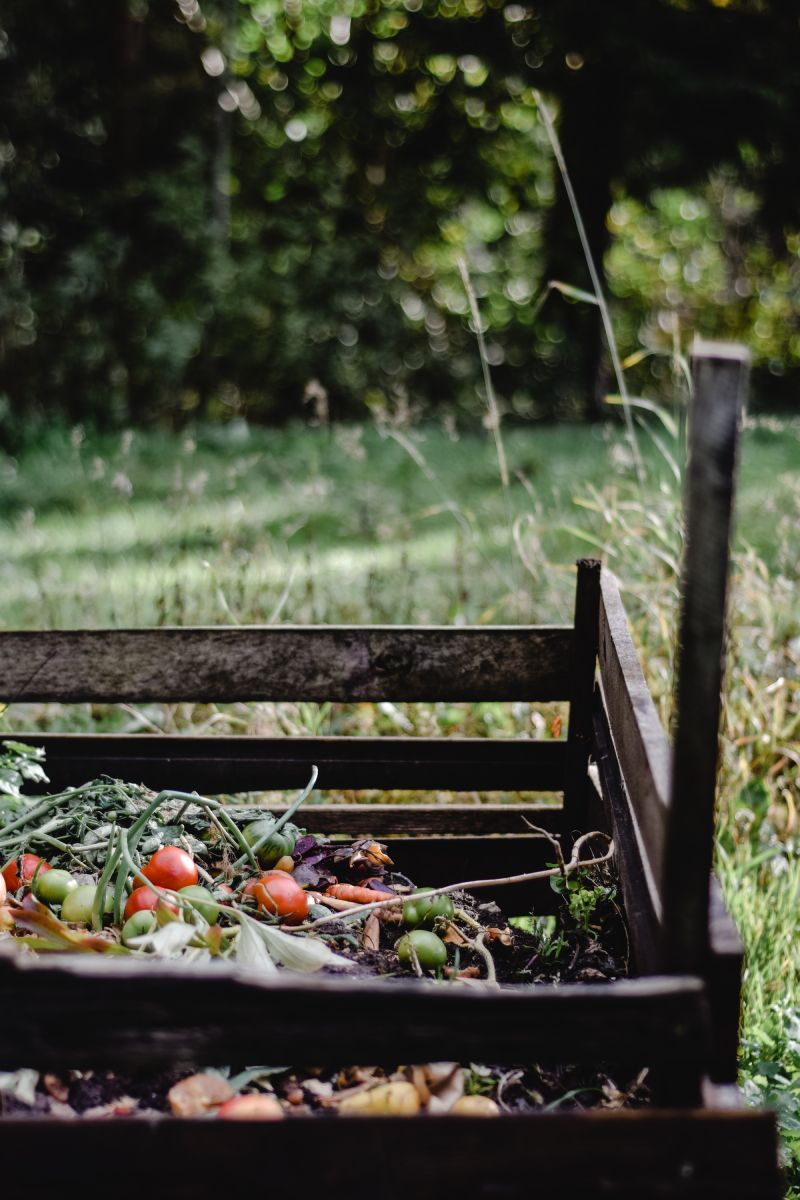
The Perks of Composting
Composting has many benefits, making it an essential practice for any green garden:
- Enriches soil: Compost adds essential nutrients to the soil, improving its fertility and structure.
- Reduces waste: You divert these materials from landfills by composting kitchen scraps and yard waste.
- Helps the environment: Composting helps mitigate climate change by reducing the amount of methane, a potent greenhouse gas, produced in landfills.
- Saves money: With compost, you can reduce or eliminate the need to buy commercial fertilizers and soil amendments.
Basic Steps in Composting
Making compost at home is simple and straightforward. Here’s a quick overview of the process:
- Select a compost bin or pile: Many compost bins are available, from simple piles to rotating bins. Choose one that fits your space and needs.
- Add materials in layers: Start with a layer of browns (such as leaves or shredded paper) for carbon, then add a layer of greens (like vegetable scraps) for nitrogen. Alternate these layers.
- Turn the compost regularly: Turning helps aerate the compost and speeds up the decomposition process.
- Wait: It takes a few months for materials to decompose into compost fully. When ready, it will look like dark, crumbly soil and have a pleasant, earthy smell.
Using Compost in Your Garden
Once your compost is ready, it’s time to use it in your garden. Here’s how:
- As a soil amendment: Mix compost into your garden soil before planting. It improves soil structure, increases nutrient content, and helps retain moisture.
- As a mulch: Spread compost around your plants to help suppress weeds and conserve water.
- In potted plants: Compost can enrich the potting mix in your potted plants or containers.
Using compost in your garden gives your plants a rich source of nutrients. It helps improve soil health and structure, promoting healthier, more robust plants.
Creating and using compost is an essential aspect of environmentally friendly gardening. It enriches the soil, encourages plant health, and plays a crucial role in reducing household waste. By starting your compost pile at home, you’re taking a significant step towards a more sustainable garden and a healthier planet.
Natural Pest Control Methods
In traditional gardening, pest control often involves synthetic pesticides that can harm the environment. On the other hand, green gardening employs natural methods that are safer for our ecosystems and equally effective. This section explores how to encourage beneficial insects, create organic pesticides, and utilize biological control methods.
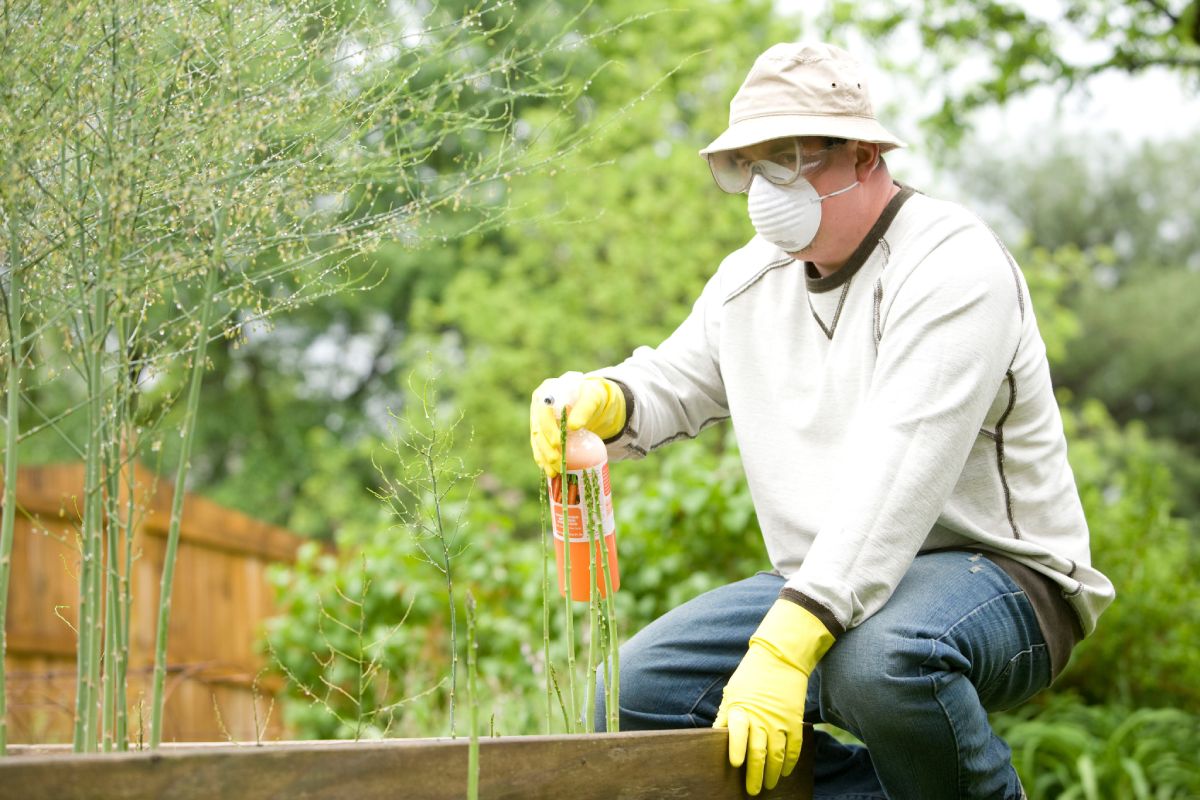
Encouraging Beneficial Insects
Believe it or not, not all insects are harmful to your garden. Some are essential allies in natural pest control:
- Ladybugs: Both adult ladybugs and their larvae feed on aphids, a common garden pest.
- Green lacewings: These insects are known as “aphid lions” for their voracious appetite for aphids.
- Spiders: While not insects, spiders play a crucial role in controlling flies, moths, and other pests.
Plant various flowers to attract these beneficial creatures to provide them with nectar and pollen. Also, minimize disturbance in areas where they might lay eggs.
DIY Organic Pesticides
You can make your organic pesticides using common household ingredients. Here are a few simple recipes:
- Garlic-Insecticide Spray: Blend two bulbs of garlic with a small amount of water, then strain and add to a gallon of water with a 1/4 cup of liquid soap. Spray on affected plants.
- Hot Pepper Spray: Mix two tablespoons of hot pepper sauce, a few drops of biodegradable dish soap, and a quart of water and spray on plants.
Even organic pesticides should be used sparingly and only on affected plants, as they can still impact beneficial insects.
Understanding Biological Control
Biological control is the use of natural enemies to manage pests. It can be a very effective and environmentally friendly form of pest control. Here are a few examples:
- Predators: These creatures hunt, kill, and feed on pests. Examples include ladybugs and spiders.
- Parasitoids: These insects lay their eggs on or in the pest’s body. When the eggs hatch, the young insects feed on the pest. Many wasps are parasitoids.
- Pathogens: These are disease-causing organisms like bacteria, fungi, or viruses that can kill pests.
Biological control requires a good understanding of the pests and their natural enemies. If done correctly, it can provide long-term pest control and reduce the need for chemical pesticides.
Green gardening not only involves growing plants in an eco-friendly manner, but it also implies protecting these plants from pests in the same vein. By implementing natural pest control methods, you are keeping your garden healthy while ensuring that your gardening practices do not contribute to environmental harm. The natural world offers many resources for maintaining balance in your garden, which can be effectively harnessed with knowledge and care.
Sustainable Lawn Care
While traditional, manicured lawns are a staple of many landscapes, they can be resource-intensive and environmentally unfriendly due to the large amounts of water, fertilizers, and pesticides required. In contrast, sustainable lawn care emphasizes practices in tune with local ecosystems. It involves exploring eco-friendly lawn alternatives, implementing natural lawn care practices, and considering lawn reduction for sustainability.
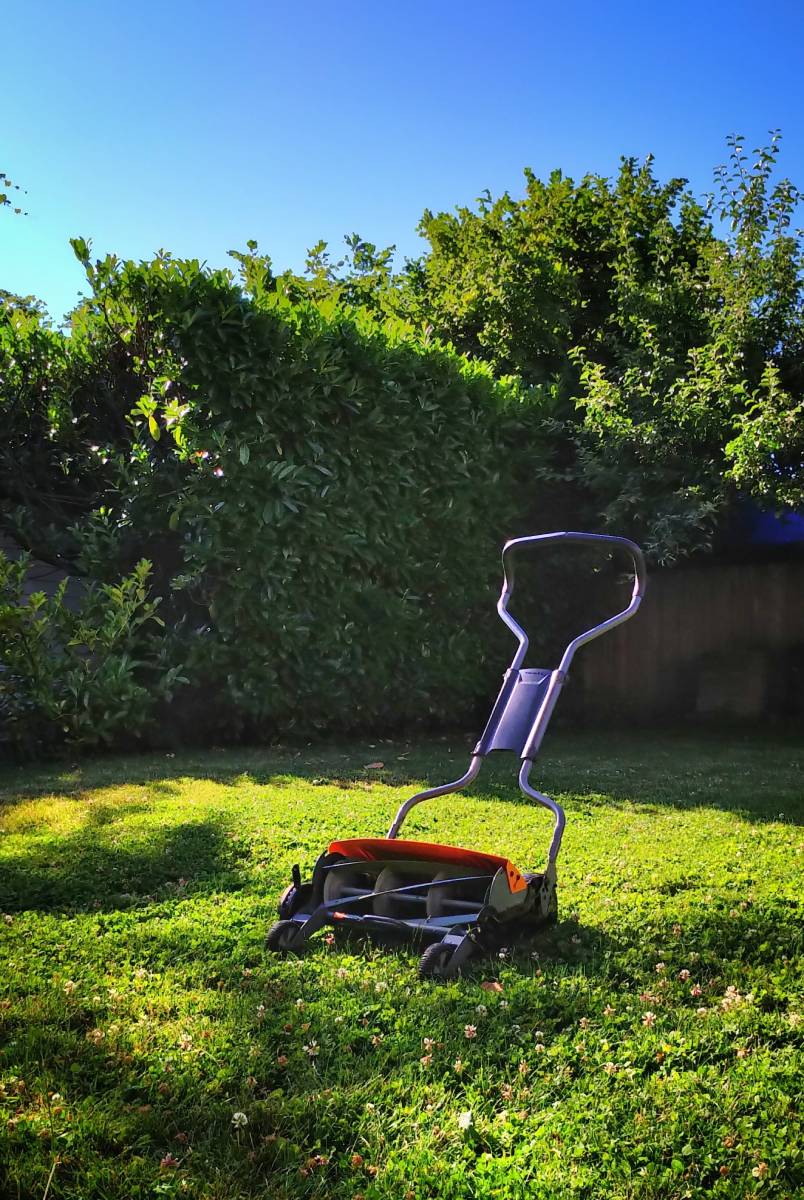
Exploring Eco-Friendly Lawn Alternatives
Traditional grass lawns are one of many options. Consider these eco-friendly alternatives:
- Native grasses: These are accustomed to local climates and pests, requiring less maintenance and fewer resources than exotic species.
- Groundcovers: Plants like clover, creeping thyme, and moss can create a beautiful, low-maintenance “lawn.”
- Wildflower meadows: These can provide a habitat for local wildlife and reduce the need for mowing.
Before choosing an alternative, research which plants best suit your local climate and soil conditions.
Practices for Natural Lawn Care
If you prefer to keep a traditional lawn, you can still make it more sustainable:
- Mow high and leave clippings: Longer grass shades the soil, reducing water evaporation. Grass clippings decompose and return nutrients to the soil.
- Water deeply but infrequently: This encourages deep root growth, making the lawn more drought-resistant.
- Use organic fertilizers: These break down slowly, providing a steady supply of nutrients and promoting soil health.
Remember, a healthy lawn is the best defense against weeds and pests. Regular maintenance, like aerating and dethatching, can help maintain lawn health.
Lawn Reduction for Sustainability
Reducing lawn space is another effective way to create a more sustainable landscape:
- Expand planting beds: Larger beds can accommodate more native plants, improving biodiversity.
- Create outdoor living spaces: Patios, decks, and play areas can replace underutilized lawn space.
- Grow your own food: Consider converting a portion of your lawn into a vegetable garden.
Remember, every little bit helps. Even a small reduction in lawn size can lead to significant savings in water and maintenance.
Creating a more sustainable lawn is a multi-step process that requires understanding eco-friendly alternatives, implementing natural lawn care practices, and an openness to reducing lawn size for the sake of sustainability. By taking these steps, you can create a lawn that beautifies your space and contributes to a healthier planet. In green gardening, each decision matters, and choosing sustainable lawn care practices can make a significant difference in the environmental impact of your garden.
Creating Wildlife Habitats
Green gardening not only focuses on the plants and soil; it also involves creating environments supporting local wildlife. A garden that attracts and sustains birds, insects, and other creatures significantly contributes to the ecosystem’s health. This section will explore how to encourage bird and insect activity, select plants that support wildlife, and understand the importance of biodiversity in your garden.
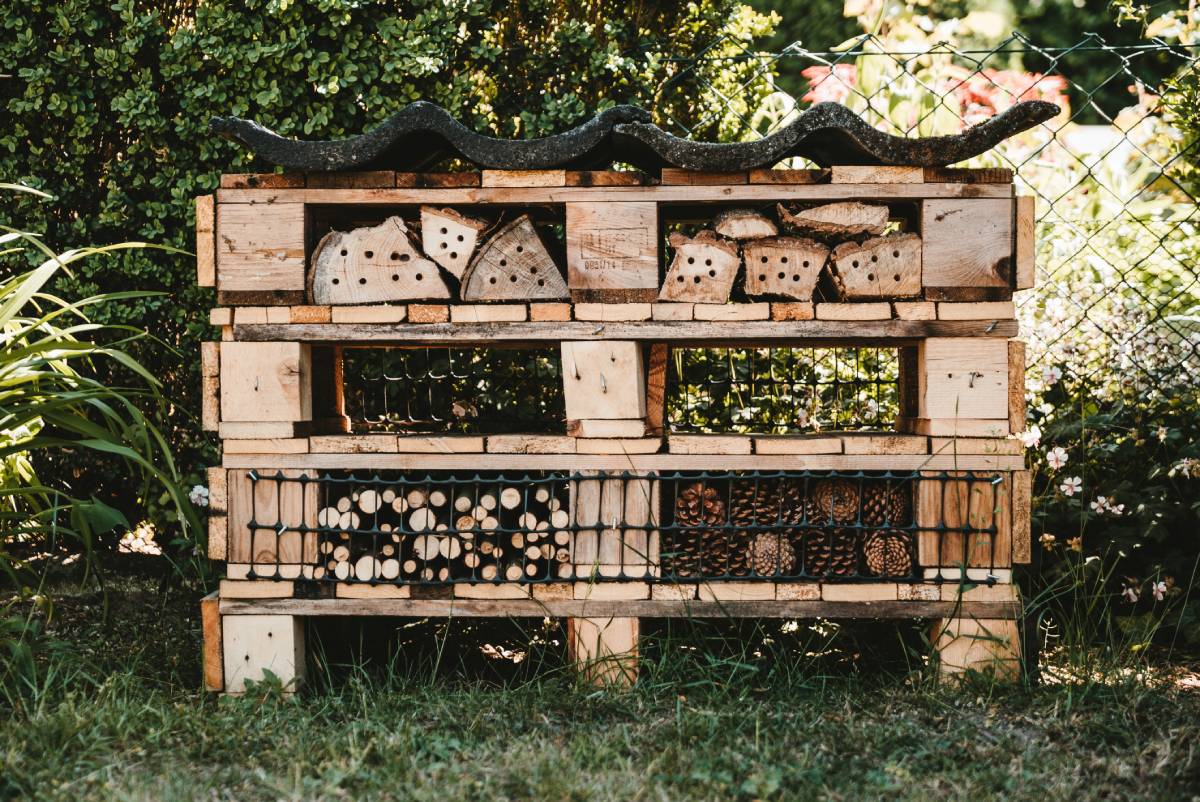
Encouraging Bird and Insect Activity
Birds and beneficial insects are a garden’s best friends. They pollinate flowers, control pests, and add life and movement. Here’s how to encourage their activity:
- Provide Food: Planting various flowering plants ensures a continuous supply of nectar. You can also set up bird feeders with seeds and nuts.
- Offer Shelter: Dense shrubs, tall grasses, and birdhouses offer safe nesting spots. Piles of leaves or logs can attract beneficial insects.
- Ensure Water Supply: A shallow bird bath or a small pond can provide necessary drinking and bathing water.
Plant Selection for Wildlife
The plants you choose can significantly impact the types of wildlife your garden attracts:
- Flowering Plants: These attract pollinators like bees, butterflies, and hummingbirds. Try to select native flowering plants for the best results.
- Berries and Seeds: Plants that produce berries or seeds provide food for birds.
- Host Plants: Some insects lay their eggs on specific plants. For instance, the monarch butterfly needs milkweed plants for its larvae.
By diversifying your plant selection, you can support a range of wildlife species.
Importance of Biodiversity in the Garden
Biodiversity—the variety of life in a particular habitat—is crucial for a healthy ecosystem. A garden with high biodiversity is more resilient and can better resist pests and diseases. It also supports more wildlife species.
In your garden, increase biodiversity by:
- Planting a Variety: Different species of plants offer different benefits for wildlife and create a more resilient ecosystem.
- Layering: Mimic nature by including trees, shrubs, and ground cover plants. Each layer provides unique habitats for different species.
- Including a Water Source: This can attract amphibians and other water-loving creatures.
Creating a garden supporting local wildlife is essential to green gardening. It’s not only about the beauty and productivity of your space—it’s also about contributing to the larger ecosystem. As a green gardener, your actions can support biodiversity and create a thriving, life-affirming space.
Green Garden Products
As you journey towards green gardening, the products you use matter significantly. Green gardening extends beyond your garden’s fence and reflects your choice of tools and supplies. This section will focus on selecting eco-friendly tools and supplies, embracing DIY garden projects, and making responsible purchase decisions to reduce environmental impacts and contribute to a more sustainable world.
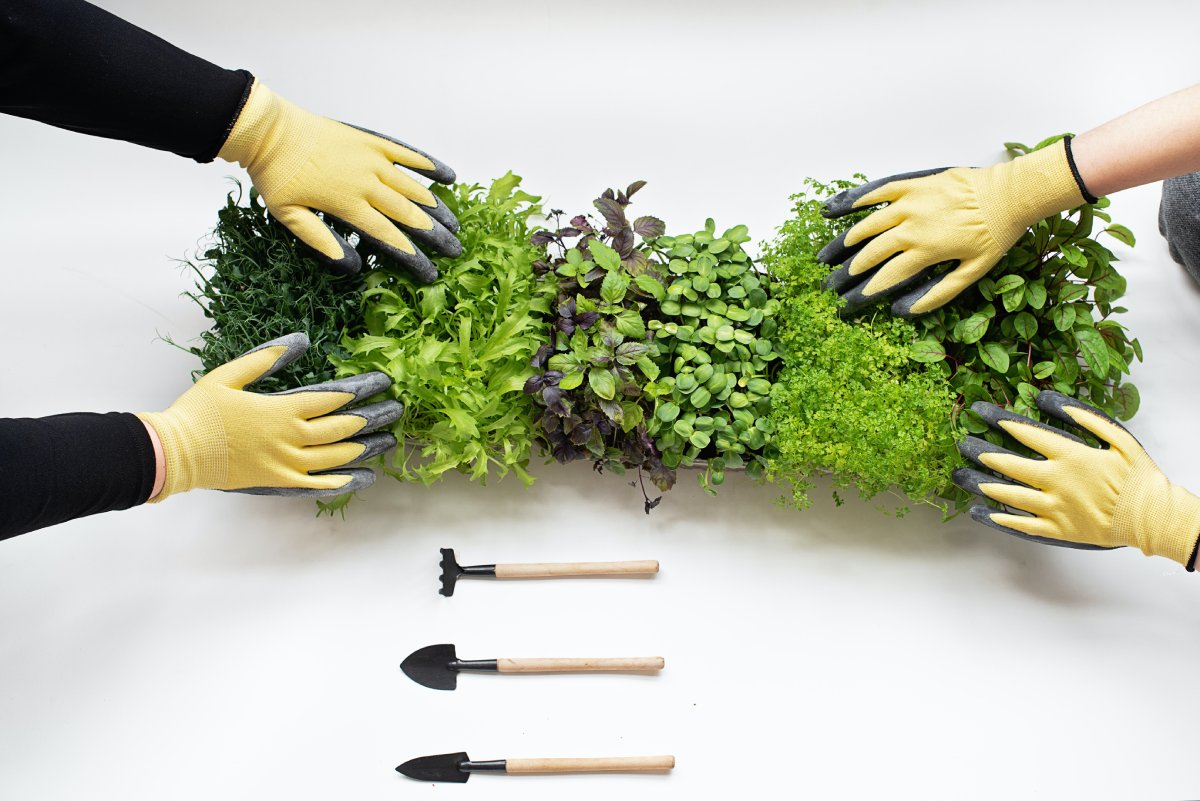
Selection of Eco-Friendly Tools and Supplies
Opting for eco-friendly garden tools and supplies is an excellent way to reduce your carbon footprint:
- Sustainable Materials: Choose tools from sustainable materials such as FSC-certified wood or recycled metals.
- Quality Over Quantity: Invest in durable, high-quality tools that will last for years, reducing the need for frequent replacements.
- Organic Fertilizers and Pesticides: Opt for organic alternatives instead of chemical-laden products. They are safer for the environment and your garden’s inhabitants.
Remember, every product choice can make a difference. The goal is to reduce, reuse, and recycle wherever possible.
Embracing DIY Garden Projects
DIY projects can reduce waste, save money, and give a sense of accomplishment. They are an integral part of green gardening:
- Composting: Create your compost from kitchen scraps and garden waste. It’s simple, reduces waste, and enriches your garden soil.
- Homemade Pesticides: You can make effective, natural pesticides from common household items like vinegar or chili powder.
- Garden Furniture: Instead of buying new, consider refurbishing old furniture or using reclaimed wood to create garden benches or planters.
By embracing DIY projects, you can control what goes into your garden and limit the environmental impact.
Making Responsible Purchase Decisions
Green gardening also involves mindful consumption. Consider these factors when making purchases:
- Locally-Sourced Products: Buying locally reduces the carbon footprint of transporting goods. Plus, it supports your local economy.
- Packaging: Choose products with minimal, recyclable, or compostable packaging to reduce waste.
- Certifications: Look for certifications that vouch for the product’s environmental credentials, such as organic, fair-trade, or Rainforest Alliance certification.
Being a green gardener isn’t just about what you do in your garden. It’s about making informed choices that reduce environmental impact and promote sustainability. The products you choose to use can contribute to a healthier planet. And with each decision, you’re sowing the seeds for a greener future.
Conclusion
As we reach the end of this enlightening journey through green gardening, it’s time to look back and contemplate the invaluable insights we’ve gained. We have explored various methods to make our gardens more environmentally friendly and understood how these small changes could collectively contribute to a sustainable planet.
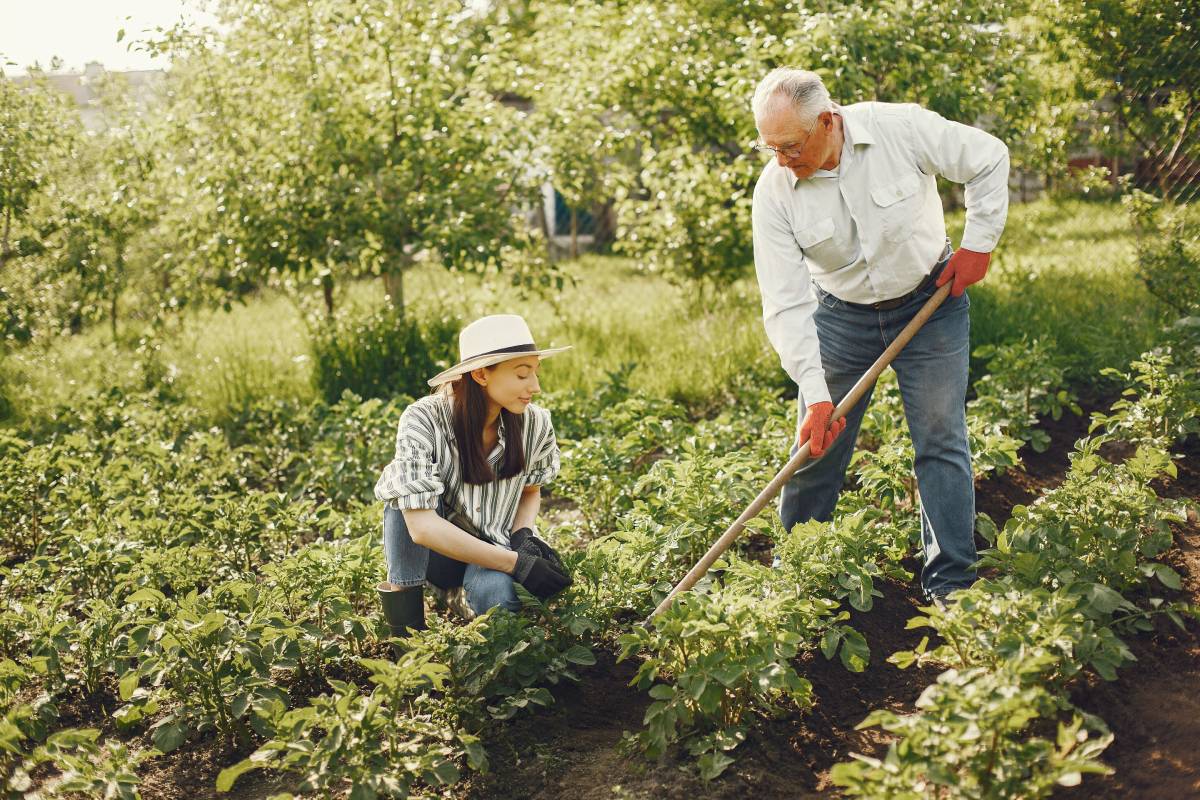
A Quick Recap of Green Gardening Tips
Here’s a quick recap of the eco-friendly gardening tips we’ve discussed:
- Choosing the Right Plants: Opt for native, drought-resistant, and perennial plants that adapt better to the local ecosystem and require less maintenance.
- Organic Gardening Practices: Shift towards organic gardening, focusing on natural ways to enrich the soil and control pests.
- Water Conservation: Implement efficient watering techniques, consider rainwater harvesting, and explore xeriscaping.
- Creating and Using Compost: Recycle garden waste and kitchen scraps into nutrient-rich compost for your garden.
- Natural Pest Control: Encourage beneficial insects and use DIY organic pesticides.
- Sustainable Lawn Care: Opt for natural lawn care practices and consider eco-friendly alternatives to traditional lawns.
- Creating Wildlife Habitats: Promote biodiversity by attracting birds, insects, and other creatures.
- Green Garden Products: Choose eco-friendly garden tools and supplies, and make responsible purchase decisions.
Inspiring Readers to Implement These Practices
Gardening is not just a pastime; it’s a powerful tool enabling us to contribute to environmental conservation directly. In our backyards, each of us can start making a difference today. We hope these insights inspire you to implement these green gardening practices, not just for the beauty and productivity of your garden but for the well-being of our planet.
A Final Word on the Importance of Sustainable Gardening
In conclusion, sustainable gardening is a profound step towards environmental stewardship. It is about creating a harmonious balance between your garden and nature. It’s an opportunity to foster biodiversity, reduce waste, conserve resources, and contribute to a healthier planet.
Let’s remember the future of our planet lies in our hands. Each small action can contribute to a larger impact. By making our gardens green, we are enriching our lives and ensuring a thriving world for future generations. Happy green gardening!




